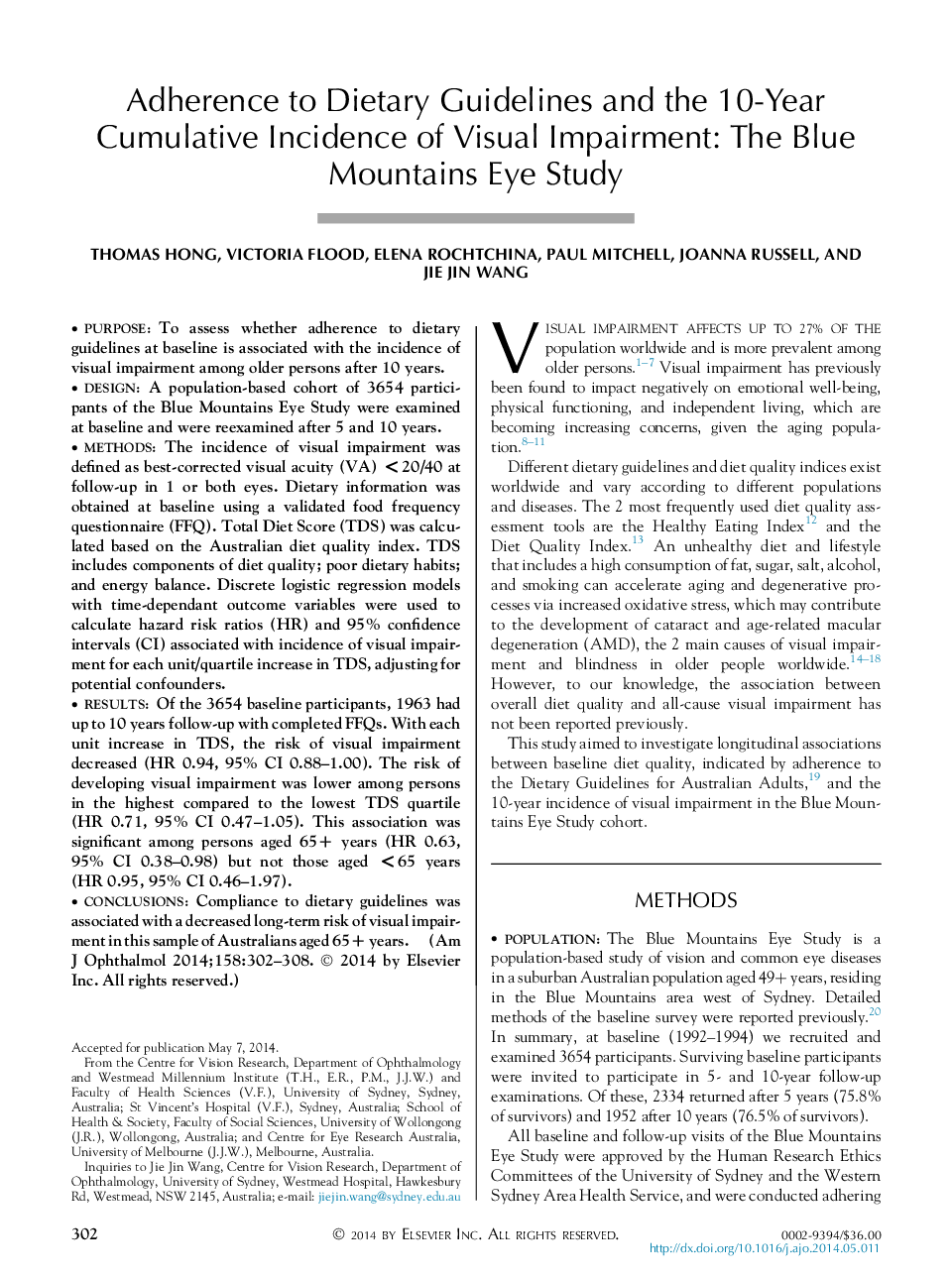| Article ID | Journal | Published Year | Pages | File Type |
|---|---|---|---|---|
| 4002088 | American Journal of Ophthalmology | 2014 | 7 Pages |
PurposeTo assess whether adherence to dietary guidelines at baseline is associated with the incidence of visual impairment among older persons after 10 years.DesignA population-based cohort of 3654 participants of the Blue Mountains Eye Study were examined at baseline and were reexamined after 5 and 10 years.MethodsThe incidence of visual impairment was defined as best-corrected visual acuity (VA) <20/40 at follow-up in 1 or both eyes. Dietary information was obtained at baseline using a validated food frequency questionnaire (FFQ). Total Diet Score (TDS) was calculated based on the Australian diet quality index. TDS includes components of diet quality; poor dietary habits; and energy balance. Discrete logistic regression models with time-dependant outcome variables were used to calculate hazard risk ratios (HR) and 95% confidence intervals (CI) associated with incidence of visual impairment for each unit/quartile increase in TDS, adjusting for potential confounders.ResultsOf the 3654 baseline participants, 1963 had up to 10 years follow-up with completed FFQs. With each unit increase in TDS, the risk of visual impairment decreased (HR 0.94, 95% CI 0.88–1.00). The risk of developing visual impairment was lower among persons in the highest compared to the lowest TDS quartile (HR 0.71, 95% CI 0.47–1.05). This association was significant among persons aged 65+ years (HR 0.63, 95% CI 0.38–0.98) but not those aged <65 years (HR 0.95, 95% CI 0.46–1.97).ConclusionsCompliance to dietary guidelines was associated with a decreased long-term risk of visual impairment in this sample of Australians aged 65+ years.
